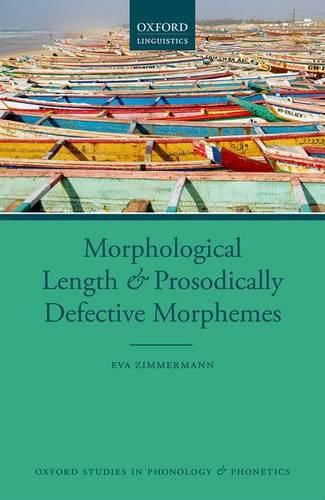Readings Newsletter
Become a Readings Member to make your shopping experience even easier.
Sign in or sign up for free!
You’re not far away from qualifying for FREE standard shipping within Australia
You’ve qualified for FREE standard shipping within Australia
The cart is loading…






This book investigates the phenomenon of morphological length manipulation: changes in segmental length that cannot be explained by phonological means alone but crucially rely on morphological information. Eva Zimmermann provides a unified theoretical account of these phenomena by taking into account all possible prosodically defective morpheme representations and their potential effects on the resulting surface structure. Data are drawn from a wide range of the world’s languages, including Aymara, Yine, Upriver Halkomelem, Wolof, Hungarian, Tohono O'odham, and Southern Sierra Miwok, providing a through representative database of morphological length manipulation patterns in the languages of the world. The author demonstrates that alternative accounts suffer from significant problems of both under- and over-generation when tested against the full range of attested phenomena. The volume will be of interest to all researchers and graduate students working in theoretical phonology and morphology.
$9.00 standard shipping within Australia
FREE standard shipping within Australia for orders over $100.00
Express & International shipping calculated at checkout
This book investigates the phenomenon of morphological length manipulation: changes in segmental length that cannot be explained by phonological means alone but crucially rely on morphological information. Eva Zimmermann provides a unified theoretical account of these phenomena by taking into account all possible prosodically defective morpheme representations and their potential effects on the resulting surface structure. Data are drawn from a wide range of the world’s languages, including Aymara, Yine, Upriver Halkomelem, Wolof, Hungarian, Tohono O'odham, and Southern Sierra Miwok, providing a through representative database of morphological length manipulation patterns in the languages of the world. The author demonstrates that alternative accounts suffer from significant problems of both under- and over-generation when tested against the full range of attested phenomena. The volume will be of interest to all researchers and graduate students working in theoretical phonology and morphology.